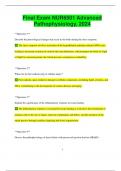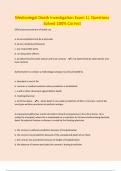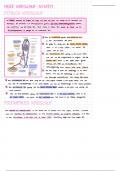Exam (elaborations)
Final Exam NUR6501 Advanced Pathophysiology, 2024
Final Exam NUR6501 Advanced Pathophysiology, 2024 **Question 1** Describe the physiological changes that occur in the body during the stress response. The stress response involves activation of the hypothalamic-pituitary-adrenal (HPA) axis, leading to increased secretion of cortisol and c...
[Show more]






